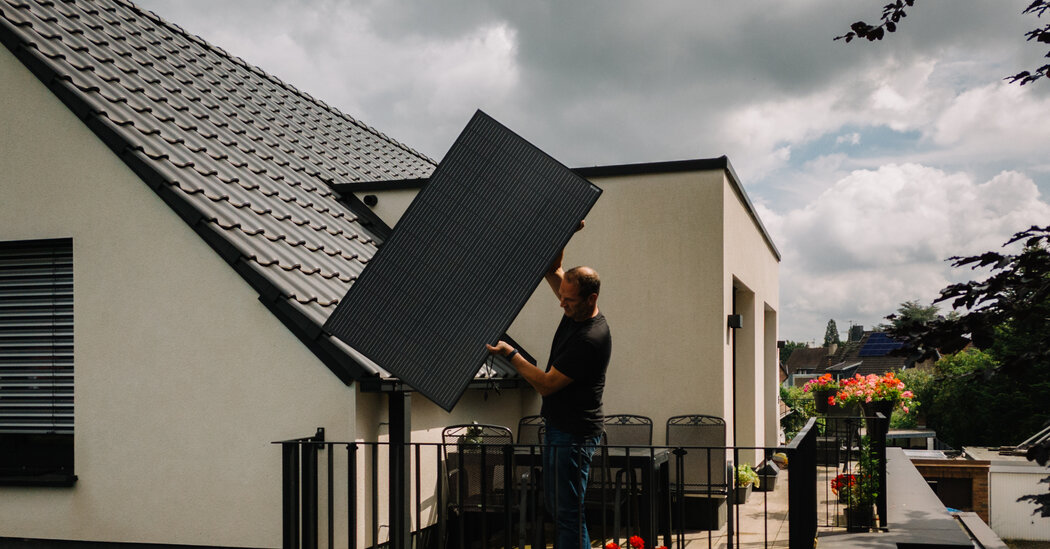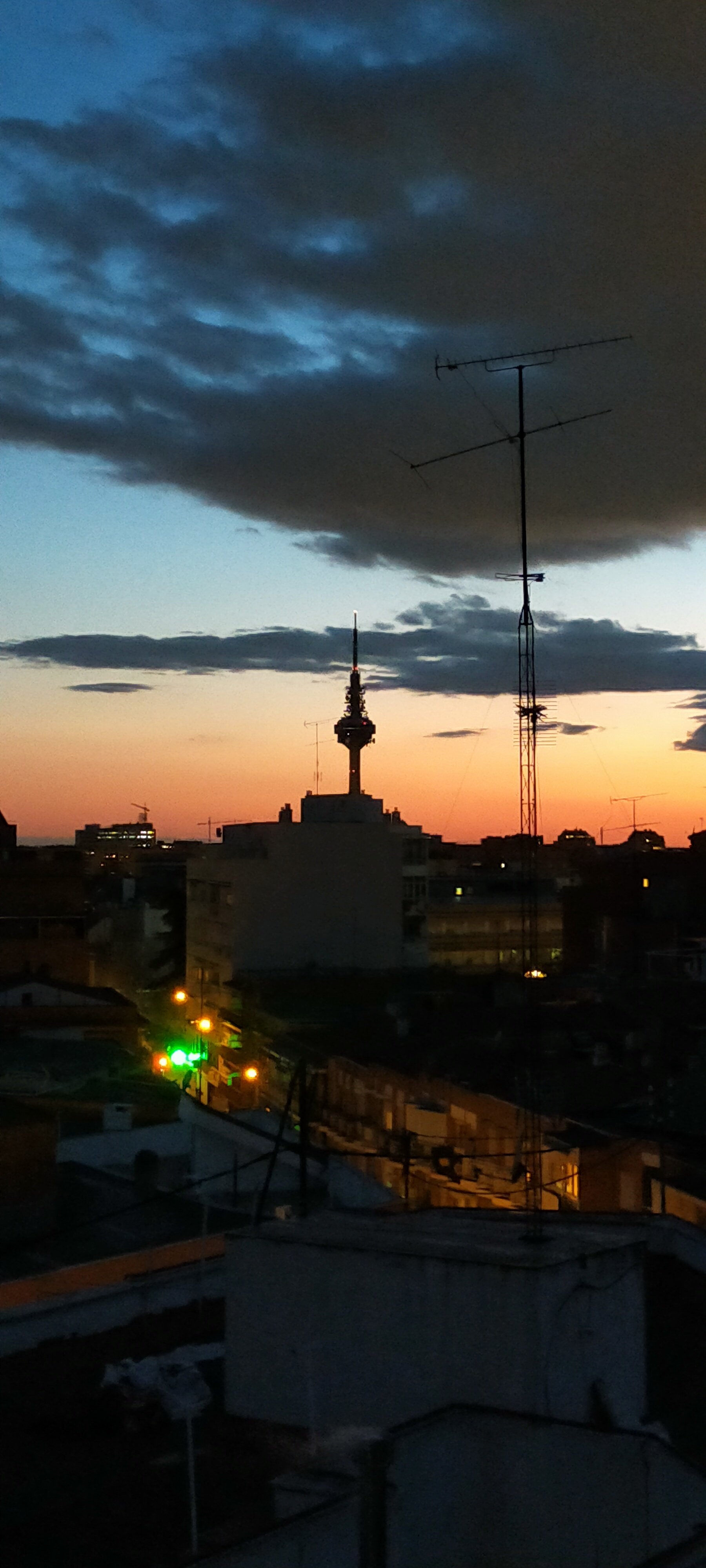- cross-posted to:
- aiop@lemmy.world
- nyt_gift_articles@sopuli.xyz
- climate@slrpnk.net
- cross-posted to:
- aiop@lemmy.world
- nyt_gift_articles@sopuli.xyz
- climate@slrpnk.net
Not mentioned in the article is that these systems are still illegal in the US.
Not everything in the world should be revolving around your stupid default country
This article is from the New York Times, a prominent US newspaper which writes primarily for a US audience. It’s relevant for them to bring it up.
As a person from Default Country, I love this statement and I want it on a shirt.
I hate this stupid country as much as the next guy, but I still want to know if there’s anything I’m allowed to do that might be good for the planet. Now I know I’m not allowed to do this because my stupid fucking country doesn’t allow it, which is usable information.
do you know why they’re illegal? is there some danger to them?
FTA:
The so-called plug-in systems involve routing the direct current generated by the panels to an inverter, which converts it to an alternating current. They can then be plugged into a conventional wall socket to feed power to a home.
So, yeah, almost certainly illegal in pretty much any grid-powered home in the US.
The basic problem is that if the grid power goes down the inverter can back-feed the grid enough to electrocute the people who are working to fix it.
Utilities require an approved isolation system of some kind that prevents that happening. They are pretty strict about this for various other technical and political reasons too, but evidently it is mostly a safety concern.
I’ve got some good locations at home for panels, and about 500W in panels that I use for camping, but the equipment I’d need to handle easily and safely consuming the power at home is kind of expensive (just running an inverter and a battery for an isolated system is easy enough, I’ve got all that, but it’s not cheap to seamlessly connect it to my home power system). Would love to have a safe and approved system like what is described in the article.
Houses in Europe are connected to the grid too.
These systems are approved in Europe by utilities because they have failsafes implemented to prevent back feeding electricity in the grid.
The fact that these systems are still illegal in the US is a political issue, not a technical one.
[European utilities] have failsafes implemented to prevent back feeding electricity in the grid
Yeah but imagine if you could save money by not doing that? What are the odds that there’s going to be cheap(er) personal mass power generation in the next few decades.
These systems are approved in Europe by utilities because they have failsafes implemented to prevent back feeding electricity in the grid.
Sounds like Big Government Regulation of my God Damned Rights to do something on my house as I see fit! Europe’s full o’ damn communists and their stupid sun grabbin’ electro-gibbits. That’s why they’ll never be the Greatest Bestest Country on da face a dis here Earf.
While it seems like they’d have to, the article makes no mention of such a fail safe. What does it do and how could it work?
From what it sounds like, the safety is in the device not the grid. In case you haven’t noticed, there is a far lesser sense of personal responsibility to those around you in the US than Europe and I don’t know that I’d trust that nobody over here would fudge some bypass to power their house in an outage
Individuals owning their own means of energy production is obviously unamerican.
It’s a feature of capitalism!
They are VERY DANGEROUS to conservatives and the flawed ideological rafts they’re still clinging to.
Are they Chinese solar panels or good ol’ American products?
They’re from the Evil Bad Country That Does the Genocides. So… uh… idk.
Because fuck us apparently.
No, because you can kill a lineman working on the downed line, who mistakenly thinks the line is dead and has no idea that you’re feeding power into it from your solar panel.
I really feel like one of these store-bought solar panels wouldn’t put out enough electricity to kill someone
You really don’t need a lot of power to kill someone, especially with AC you really don’t need much to induce ventricular fibrillation.
A 120W panel at full sunlight easily has enough power to kill someone. That’s 1A at 120V, minus some conversion losses. 120W is pretty low end these days.
The inverters are built with an automatic shut off during grid outages, specifically for lineman safety.
Those inverters can’t backfeed, they need a grid to synchronise to.
Largely illegal by way of import. The Americans don’t want cheap foreign panels dominating their still-nascent domestic solar industry.
Removed by mod
Removed, civility.
These plugin systems are quite interesting, they allow renters for example to get some benefits of Solar without having to make permanent installs. The systems a lot cheaper than a full setup but obviously don’t produce the same amount of power. I first saw them appearing in France and then since Germany changed the law to allow them its good to see it flourishing there too. This isn’t going to save the planet but its a little step of improvement.
400 Euro isn’t bad for all the fittings and inverter and the big benefit of these DIY systems is you just put them together and connect them to a standard wall socket. Constantly just saves you money on your bills when there is sunshine. Its also not enough power that its worth dealing with export tariffs but in countries where smart meters already exist it could be part of the mix.
How does that work with the fuse box? Like mine has a 100A fuse for the whole house, but a bunch of smaller fuses for e.g. downstairs, upstairs, lights, etc. Does it only work on the circuit it’s connected to or what?
It can power across the circuits its all technically the same electrical connection within a house. These systems are relatively small due to the constraints of a typical standard plug and the amps it can support so they tend to be limited to less than half of the total power on a loop.
I put a small flexible light weight one up last year. Secured with steel washcloth line (it doesn’t have glass or anything, just a plastic sheet with cells on it), the city replaced the meter to account for feeding in (not needed, I work home office and use up all of it in my apartment) cost me 600 or so last year, plugs into regular wall socket and has already lowered consumption by about 1/10th which is a solid chunk of money with current prices. I am very happy I get to do something as a renter, even if it will take years to pay for itself.
Anyone know if anything like this is allowed in the UK?
New York Times Media Bias Fact Check Credibility: [High] (Click to view Full Report)
New York Times is rated with High Creditability by Media Bias Fact Check.
Bias: Left-Center
Factual Reporting: High
Country: United States of America
Full Report: https://mediabiasfactcheck.com/new-york-times/Check the bias and credibility of this article on Ground.News:
- https://ground.news/find?url=https%3A%2F%2Fwww.nytimes.com%2F2024%2F07%2F29%2Fbusiness%2Fgermany-solar-panels-climate-change.html%3Funlocked_article_code%3D1.-00.0349.cWTL1gUdvaMj%26smid%3Dem-share
Media Bias Fact Check is a fact-checking website that rates the bias and credibility of news sources. They are known for their comprehensive and detailed reports.
Thanks to Media Bias Fact Check for their access to the API.
Please consider supporting them by donating.Beep boop. This action was performed automatically. If you dont like me then please block me.💔
If you have any questions or comments about me, you can make a post to LW Support lemmy community.I don’t hate this bot.
But I don’t love it. Maybe it’s just too much info? Or formatting? I don’t know.
Yeah, looks like the bot needs a little attention from the devs
deleted by creator
My dude did you even read the article?
299€ for a complete 840 Wp setup at Lidl the other day.
Wtf? Read the article. It’s about 400 Euro full set ups
Bro the article headline even says balcony railings. We’re talking single solar panel + plug in micro inverter type setups. That’s like $200 if you shop around.
And not sure if you’re aware, but after the “usable age” the system produces at like 80% capacity, so unless you disconnected from the grid and really really need that last 20%, you don’t need to change a thing and can keep using it way past the warranty period. Or you can add a couple extra panels. Why replace the whole thing lol.
My dude did you even read the article?
In Germany, individual plug-in panels sell for as low as 200 euros, or about $217, at big box stores. Complete sets, including mountings, an inverter and cables, are about twice that cost.











